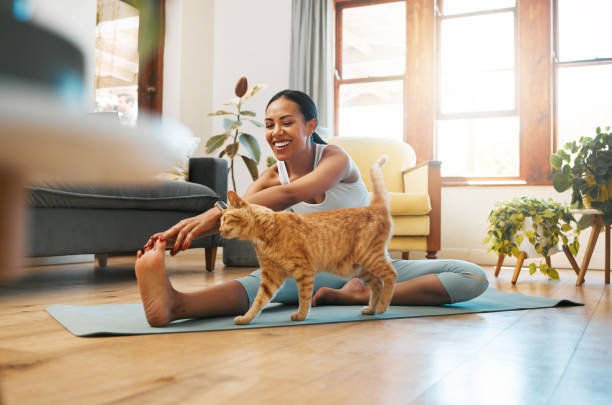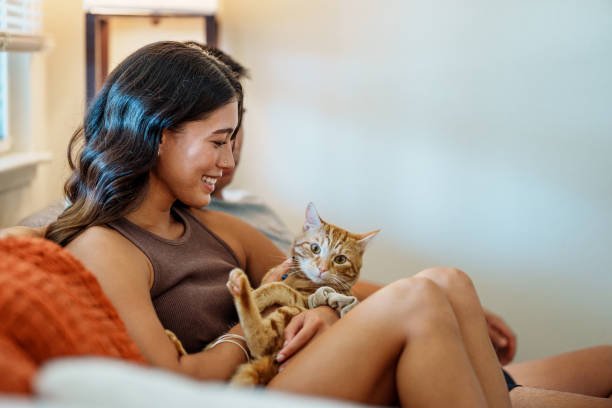
Firstly, it is vital to differentiate between purebred and mixed-breed cats. Purebred cats are those that belong to recognized breeds with specific, standardized traits such as size, coat type, and temperament. Conversely, mixed-breed cats, also known as domestic cats, are not associated with a specific breed and exhibit a combination of various traits. While both types can make loving pets, purebred cats often come with distinct behaviors and grooming requirements that prospective cat owners should consider.
Moreover, cat breeds can be categorized based on several traits, including temperament, size, and grooming needs. For instance, Siamese and Burmese cats are typically more vocal and sociable, appealing to families seeking interactive companions. In contrast, breeds like the British Shorthair and Scottish Fold may offer a more laid-back demeanor, making them suitable for quieter households. Additionally, size plays a role in determining a cat’s suitability; larger breeds may require more space and resources, while smaller breeds can adapt well to various living environments.
Lastly, grooming needs can vary significantly among cat breeds. Long-haired breeds, such as Persians and Maine Coons, necessitate regular grooming to prevent matting and maintain coat health, while short-haired breeds generally require less maintenance. Understanding these traits ensures that potential cat owners are well-informed when selecting a breed that complements their lifestyle and preferences.
Factors to Consider When Choosing a Cat Breed
When selecting the ideal cat breed, potential owners must evaluate several key factors that can significantly impact their decision and overall satisfaction with their new feline companion. One primary aspect to consider is the living environment. Cat breeds exhibit varying adaptability levels to different spaces, such as apartments and large homes. For instance, while some breeds, like the Ragdoll or British Shorthair, may thrive in both settings, others, like the Bengal, require more room to explore and play. Understanding the traits and needs of various breeds in relation to your living space can lead to a harmonious household.
Lifestyle compatibility is another crucial factor. Individuals leading active lives may prefer energetic breeds like the Abyssinian or Siamese, known for their playful personalities. Conversely, those who lead a more sedentary lifestyle might seek a calm, laid-back breed such as the Persian or Scottish Fold. Assessing your daily routine and activity level can aid in identifying a breed that will integrate well into your life.
Allergies should also be taken into account. Many individuals are sensitive to cat dander, leading them to consider hypoallergenic breeds. Even though no cat is entirely hypoallergenic, breeds like the Siberian or Balinese are known to produce fewer allergens. Consulting with a healthcare professional about allergy management is advisable before making a decision.
Time commitment concerning grooming and training varies significantly across breeds. Long-haired varieties such as the Maine Coon require regular grooming, while short-haired breeds, like the American Shorthair, are more low-maintenance. Furthermore, patience and consistency are essential for training regardless of the breed’s temperament. Lastly, budget considerations must be evaluated, covering initial costs, ongoing care, food, and veterinary expenses. Being aware of these factors will allow prospective owners to make an informed decision concerning which cat breed aligns best with their personal circumstances and preferences.

The Siamese cat is renowned for its striking appearance and vocal personality. With their short, sleek coat and distinctive color points on the ears, face, paws, and tail, they capture attention immediately. Siamese cats are highly social and thrive on interaction; they often form strong bonds with their owners. Their playful and intelligent nature requires regular mental stimulation, making them ideal for families or individuals who can engage with them frequently.
Persian cats, on the other hand, are known for their long, luxurious coats and sweet demeanor. With their flat faces and large, expressive eyes, Persians are the epitome of the affectionate lap cat. Their calm and laid-back personality makes them suitable for quieter households. However, their maintenance needs are significant, as regular grooming is essential to prevent matting and maintain their regal appearance.
For those seeking a more robust and adventurous breed, the Maine Coon may be the perfect fit. Often referred to as “gentle giants,” Maine Coons are one of the largest domestic cat breeds and are known for their tufted ears and bushy tails. They possess a friendly, playful disposition, often getting along well with children and other pets. Their adaptable nature fits various living situations, from apartments to larger homes.
Lastly, the Bengal is notable for its exotic, leopard-like appearance, created by its distinctive spotted coat. Bengals are energetic, intelligent, and love to play, making them well-suited for active households. Their curiosity and playful nature can keep them entertained, but they require consistent social interaction to thrive. Understanding these breeds’ characteristics will help potential cat owners make an informed decision aligned with their lifestyle and preferences.
Finding a Reputable Breeder or Adoption Center
When considering adding a cat to your family, one of the most critical steps is finding a reputable breeder or adoption center. The decision between adopting a cat and purchasing one from a breeder should be made with thorough evaluation. Adoption centers often shelter cats needing a loving home, while reputable breeders typically focus on specific breeds with care and responsibility.
Research is paramount when searching for either option. Start by looking for local shelters and feline rescue organizations that prioritize the health and well-being of their animals. Online resources, such as Petfinder and Adopt-a-Pet, can assist in identifying available cats in your area. When it comes to breeders, seek those affiliated with recognized feline associations which enforce standards of care and breeding practices. Reviews and testimonials from previous clients can also provide insights into the breeder’s reputation and the condition of their cats.
Visiting potential breeders or adoption centers is an essential step in the evaluation process. When you arrive, observe the cleanliness of the facility and the health of the cats present. Pay attention to their behavior and interactions with staff and other animals. This environment can be indicative of the overall care provided. During your visit, ask pertinent questions: What health screenings are performed on the cats? What socialization practices are implemented? Are they willing to provide references from prior adopters or clients?
It is crucial that the welfare of the cat is prioritized in any acquisition process. Ensure that the breeder or adoption center emphasizes responsible breeding and ethical practices. Adopting a cat or purchasing one from a breeder should ultimately serve the best interest of the animal, bolstering the case for ethical choices in your cat acquisition journey. By taking these steps, you not only support humane practices but also enhance your likelihood of selecting a healthy and well-adjusted feline companion.
